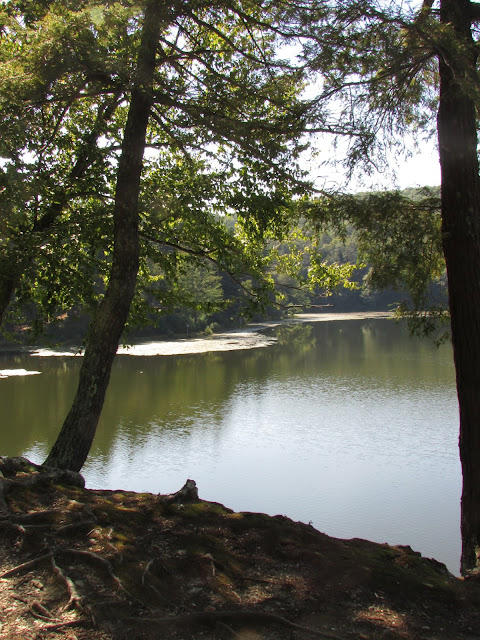Well, it has been awhile. It is difficult to get back into the habit of writing, recording, and photographing after such a long hiatus: I blame slow internet (until now) and also that cute baby. But now I am back. So here is a hodgepodge of the past week; of gardens I work in, of my own gardens, of plant interests, successes and questions.
That red plant is Lychnis chalecondica, a nice shocking red in early summer and here it is going for a second round of bloom in August. It is plant, that when blooming, stops people in their tracks. It stopped me the first time I noticed it planted in the stock beds at Great Dixter amongst our beautiful, white flowering fleabane, Erigeron annus.
This is Ipomopsis rubra (standing cypress). The plant looks a lot like Eupatorium capilifolium with its fluffy, bright green foliage heading awkwardly straight upwards, but then it has this striking pink flower! I was particularly shocked to see this type of growth when the whole time I thought I was growing that sweet, twining Cardinal Climber Ipomoea sloteri. Haha, what a surprise.
This is a pool garden that Laurie and I planted three years ago using plants pilfered from other parts of the garden, including an Indigofera (possibly 'Rose Carpet?'-hugging the pools edge and doing fantastically against the rocks) and these wonderful Pennisetum alopecuroides seen here in full flower. We planted about 100 drumstick allium (Allium sphaerocephalon) and over the years they have tripled. Last year we cut them back once they went brown, but this year we've let them go to gray and we think they still look good.


I think front-of-the-border annual plants can be a little tricky. I want something lush, full, and interweaving so it is a major success when I stumble across one that I love. Like this Gomphrena 'All Around Purple.' It goes in a little small, but after a few weeks of summer heat the plant takes over whatever spot it is given. It weaves, it bushes, it stays upright (with no flopping) and keeps on blooming and blooming. A great cut too, straight stems of medium length, that can be used in dried arrangements. It is an electric purple so bring on the color. I love it with the silvery Plectranthus 'Silver Shield' pictured here.
Clerodendrum trichotomum
A very exciting underused plant around these parts. This one gives a scary zone rating (zone 6 or higher), but in Vermont it comes back happily from the roots. This spring, after a very harsh winter, shoots came up from the base, and are currently heading into flower.
Glowing white Euphorbia marginata all self sown.
And who is the plant? My guess is a short, fine leaved Helenium, but I cannot find evidence that this type of Helenium exisits...yet. This was a throw away plant with no label, and now it is doing beautifully. Annual, perennial? It is about 5" high and ever blooming.
And lastly, I am in love with Rudbekia triloba, with its clouds and clouds of airy black eyed susan flowers. Here it mingles with Sanguisorba officinalis which I started from seed last year. I planted it in my gravel garden last fall, just as a holding spot, and it has done so well without water or compost. The stems are super strong and straight and not one has flopped. It is behaving very well in these conditions, even though I would have thought it wanted moisture and rich soil. What a nice surprise! I thought I preferred the cultivar 'Tanna,' but actually the straight species offers a bigger effect, slightly larger leaves, taller stems, and bigger flowers.


 Salvia 'Big Blue' is one of the best annuals, chunky and deep violet blue and tall! Thank you Emily for introducing me to this gem.
Salvia 'Big Blue' is one of the best annuals, chunky and deep violet blue and tall! Thank you Emily for introducing me to this gem.







































